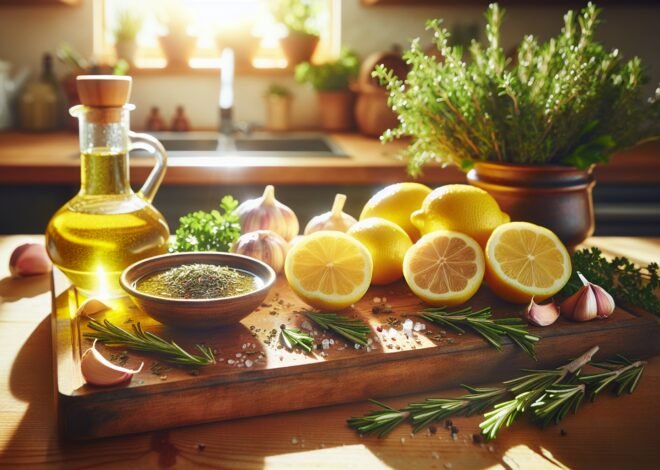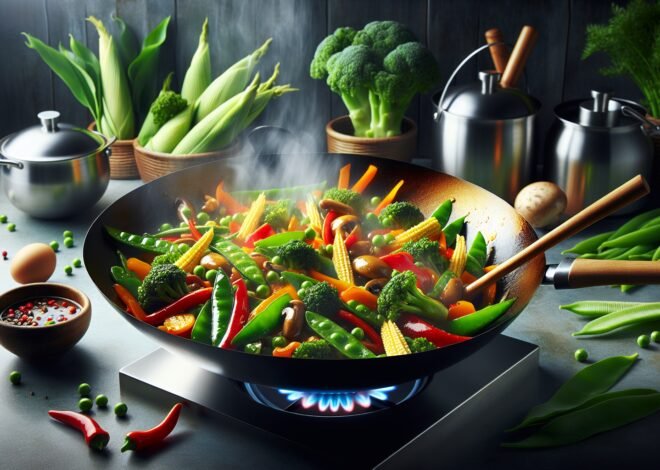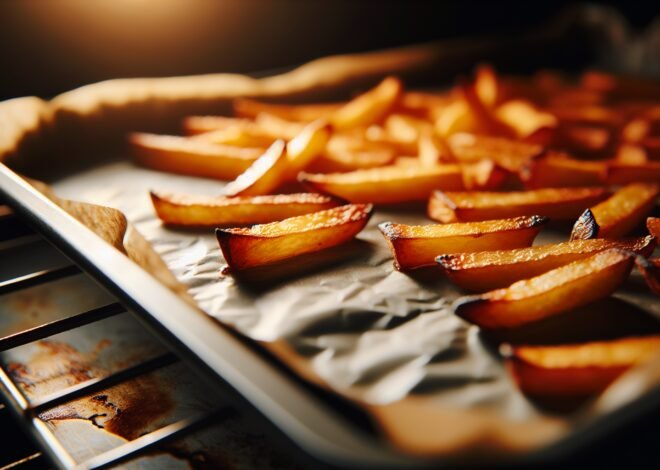
How to Stir-Fry Noodles for Delicious One-Pan Meals
Stir-fry noodles, a quick and versatile dish, have become a staple in many kitchens, blending flavors effortlessly in one pan. This easy technique allows you to create a variety of delicious meals tailored to your taste in just minutes. Offering a balance of proteins, veggies, and spices, stir-fry noodles cater to both health-conscious eaters and those craving comfort food. Discover how to choose the right ingredients, master the timing, and employ essential tips to enhance the texture and flavor of your creations. Dive into the world of stir-fry noodles and turn ordinary ingredients into extraordinary meals bursting with flavor and nutrition.
Choosing the Right Noodles for Stir-Frying
Finding the perfect noodles is the secret to an extraordinary stir-fry. The texture and flavor of the noodles lay the foundation for a successful dish. From chewy to silky, your choice can elevate the entire meal. Let’s dive into the options and learn how to prepare them for stir-frying.
Best Types of Noodles for Stir-Fry Dishes
Stir-fry dishes thrive on variety, and the type of noodle can transform the meal. Some favorites include:
- Egg Noodles: They are versatile and absorb flavors well, making them a popular choice for many stir-fry recipes.
- Rice Noodles: Thin or wide, they offer a gluten-free option with a light and delicate texture.
- Soba Noodles: Made from buckwheat, these noodles provide a nutty flavor, great for a unique twist.
- Udon Noodles: Thick and chewy, these Japanese noodles hold up well in hearty stir-fries.
Deciding on the best noodle depends on the desired taste and texture. Experimenting with different types can lead to delightful culinary discoveries.
How to Prepare and Cook Noodles for Stir-Fry
Preparation is key to perfect stir-fry noodles. Here’s a step-by-step guide:
- Boil Water: Start by boiling a large pot of water. The noodles should have plenty of room to cook.
- Cook Noodles: Depending on the type, cook noodles until they’re just tender. Avoid overcooking to prevent mushiness.
- Rinse and Drain: Rinse cooked noodles under cold water to stop cooking and remove excess starch.
- Toss with Oil: Lightly coat noodles with oil to prevent sticking during stir-frying.
This method ensures the noodles remain separate and ready to absorb the flavors of the sauce and ingredients.
Buying the Right Noodles: Fresh vs. Dried vs. Frozen
When buying noodles, consider the form that suits your needs:
- Fresh Noodles: Offer a tender texture. They cook quickly but have a shorter shelf life.
- Dried Noodles: Convenient and long-lasting. They require soaking or boiling before use.
- Frozen Noodles: Provide the freshness of fresh noodles with the convenience of longer storage.
Each type has its benefits. Fresh noodles are ideal for a soft, chewy bite, while dried noodles are great for stocking the pantry. Frozen noodles provide a balance of convenience and freshness. Choose based on preference and availability to enhance your stir-fry experience.
Essential Ingredients for Stir-Fry Noodles
A successful stir-fry is more than just noodles. It’s about the vibrant mix of vegetables, proteins, and sauces that create a balanced and delicious dish. Let’s explore the essential ingredients that bring stir-fry noodles to life.
Key Vegetables for Stir-Fry Noodles: From Peppers to Broccoli
Vegetables add color and texture, making every bite exciting. Here are some popular choices:
- Bell Peppers: Their sweetness complements savory flavors, adding a satisfying crunch.
- Broccoli: Provides a hearty bite and pairs well with a variety of sauces.
- Carrots: Offer a slight sweetness and vibrant color, sliced thin for quick cooking.
- Snap Peas: Add freshness and a slight crunch, perfect for balancing heavier ingredients.
These vegetables can be mixed and matched to suit personal taste. Always aim for a variety of colors and textures for a balanced dish.
Protein Options for Stir-Fry Noodles: Chicken, Shrimp, and Tofu
Protein is a crucial component, providing sustenance and flavor. Consider these options:
- Chicken: Versatile and satisfying, it absorbs sauces beautifully.
- Shrimp: Quick to cook, adding a seafood twist with a light and sweet flavor.
- Tofu: A vegetarian favorite that soaks up flavors, offering a soft and creamy texture.
Each protein brings its own unique attributes to the dish. Choose based on dietary preferences and flavor profiles to complement the noodles and vegetables.
Creating Flavorful Sauces for Stir-Fry Noodles
The sauce ties the dish together, injecting layers of flavor. A good sauce balances sweet, salty, and umami:
- Soy Sauce: A base ingredient that adds depth and saltiness.
- Oyster Sauce: Contributes a sweet and savory richness.
- Hoisin Sauce: Provides a sweet and tangy flavor with hints of spice.
- Sesame Oil: Adds a nutty aroma and subtle flavor.
Experimenting with these ingredients can help create a signature sauce. Adjust the balance according to taste to ensure every bite is flavorful and satisfying.
Tips and Techniques for Perfect Stir-Fry Noodles
Mastering stir-fry noodles involves more than just ingredients. The techniques used can make or break the dish. From preventing sticking to optimal cooking methods, these tips will help achieve perfection in every stir-fry.
The Right Way to Stir-Fry Noodles Without Sticking
Avoiding noodle clumps is crucial. Here’s how to keep them from sticking:
- Use a Hot Pan: Ensure your wok or pan is hot before adding ingredients. This prevents sticking and helps in quick cooking.
- Oil as Needed: Add oil to the pan and toss noodles well, ensuring they’re lightly coated.
- Frequent Tossing: Keep noodles moving in the pan to prevent sticking and ensure even cooking.
These steps ensure noodles remain separate and evenly cooked, enhancing the overall texture of the dish.
Stir-Fry Cooking Methods for Home Chefs
Stir-frying at home can be simple with the right approach:
- High Heat: Use high heat to cook ingredients quickly, preserving texture and flavor.
- Batch Cooking: If making a large amount, cook in batches to avoid overcrowding the pan.
- Prepping in Advance: Have all ingredients ready and within reach to ensure a smooth cooking process.
These methods help home chefs replicate restaurant-quality stir-fry noodles, ensuring each element is cooked perfectly.
Garnishing and Serving Your Stir-Fry Noodles Dish
Presentation enhances enjoyment. Consider these garnishes and serving tips:
- Chopped Green Onions: Add freshness and a burst of flavor.
- Sesame Seeds: Provide a subtle crunch and visual appeal.
- Lime Wedges: Offer a zesty kick to balance rich flavors.
Serve your stir-fry noodles hot, with these garnishes enhancing both appearance and taste. A well-presented dish not only looks appetizing but also completes the dining experience.
Conclusion
The article explains how to prepare and cook stir-fry noodles. It outlines the essential ingredients, such as noodles, vegetables, protein, and sauce. Key steps include prepping ingredients, heating a wok, and quickly cooking everything together. Tips for achieving ideal texture and flavor are provided, such as using high heat and stirring continuously. The article encourages experimentation with different sauces and vegetables to suit personal tastes.
FAQ
How do you make stir-fry noodles at home?
To make stir-fry noodles at home, start by cooking your choice of noodles until al dente. In a hot wok or skillet, heat oil and add proteins like chicken, beef, or tofu. Stir-fry until cooked, then add vegetables. Toss in cooked noodles, pour in your sauce, and stir-fry everything together for a few minutes.
What types of noodles can be used for stir-fry dishes?
Various noodles work well in stir-fry dishes. Try using egg noodles, rice noodles, soba noodles, or udon for different textures and flavors. Each noodle type brings a unique element to the dish, so choose based on personal preference or dietary needs.
What are the best vegetables to include in stir-fry noodle recipes?
Vegetables that complement stir-fry noodles include bell peppers, broccoli, snap peas, carrots, and bok choy. These veggies add color, crunch, and a burst of nutrition. Feel free to experiment with seasonal produce for variety.
How do you prevent stir-fry noodles from sticking together?
To keep noodles from sticking, rinse them under cold water after cooking. Drizzle a bit of oil over the noodles and toss them gently. When stir-frying, ensure your pan is hot before adding noodles to help them separate.
What is the best sauce for stir-fry noodles?
The best sauce depends on your taste, but popular choices include soy sauce-based mixes, teriyaki, or oyster sauce. Add ginger, garlic, and chili for extra flavor. Adjust seasoning to achieve the right balance of sweet, salty, and spicy.
Can you make stir-fry noodles in advance and reheat them?
Yes, you can prepare stir-fry noodles in advance. Store them in an airtight container in the fridge. Reheat in a hot pan or microwave, adding a splash of water or sauce to maintain moisture. Fresh toppings can enhance reheated dishes.











